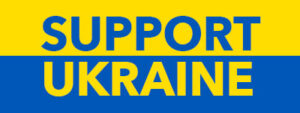In the Jewish faith, Yom Kippur is known as the Day of Atonement.
Yom Kippur, or Soodny Den’in Ukrainian, is the holiest and most solemn day of the year for Jews, as the focus is on atonement and repentance.
Yom Kippur completes the annual period known in Judaism as the High Holy Days … or in Hebrew, Yamim Nora’im, meaning “Days of Awe.”
According to Jewish tradition, on Rosh Hashanah G-d inscribes each person’s fate for the coming year into the Book of Life, and waits until Yom Kippur to “seal” the verdict. During the Days of Awe, a Jew tries to amend his or her behavior, and seek forgiveness for wrongs done against G-d and against other human beings. The end of Yom Kippur brings absolution by G-d.
The ten days leading up to Yom Kippur are known as the Ten Days of Repentance. During this period Jews are encouraged to seek out anyone they may have offended, and sincerely request forgiveness, so that the New Year can begin with a clean slate.
This process of repentance is called teshuvah in Hebrew and it is a crucial part of Yom Kippur. Despite what many people may think, transgressions from the previous year are not forgiven through prayer, fasting and participation in Yom Kippur services. Jewish tradition teaches that only offenses committed against G-d can be forgiven on Yom Kippur. Therefore it is important that people make an effort to reconcile with others before participating in Yom Kippur services.
Yom Kippur is a day to draw closer to G-d through prayer and fasting. Total abstention from food and drink usually begins 20 minutes before sundown and ends after nightfall the following day.
For Orthodox Jewish men, wearing white clothing, in particular a white robe called a Kittel, is traditional — to symbolize one’s purity on this day. On the day before Yom Kippur, many also immerse themselves in a ritual bath called a mikvah.
At the Yom Kippur service, a head covering is required for men, and optional for married women.
The Yom Kippur Temple service includes a public confession of sins and a special order of service, which recalls the ancient service performed by the High Priest of the Holy Temple in Jerusalem to bring atonement and spiritual cleansing to the Jewish people.
Yom Kippur is also a day to remember our loved ones who have left this World, as well as to remember those who were persecuted just for being born Jewish, and who perished at the hands of the enemies of Humanity.
As well, Yom Kippur is a day of reconciliation, when Jews strive to make amends with people to better understand each other.
As Jews have lived together with the Ukrainian People for ages, looking back over time we can see that black outside forces attempted to ruin our relations, working hard to break the unique cultural, economic and societal ties between our peoples.
Therefore we commemorate in our Izkor — our Remembrance prayers — those Ukrainian and Jewish People who perished during Holodomor and the Holocaust, and during the many terrible pogroms initiated by the Tzar’s black hundreds and other destructive movements. Those forces and their roles must be studied in depth and documented by reputable and fair-minded historians.
Meanwhile, in Ukraine today, Jews and Ukrainians have a rare opportunity to rebuild and strengthen the cordial ties binding us together for centuries. Throughout the year, and at this time especially, we ask G-d’s blessing and guidance as we work together towards that blessed goal.
For more information on the work of the Jewish Heritage Museum, please visit their website.
Narrated by Renata Hanynets, Research Fellow at the Faina Petryakova Center in Lviv, Ukraine.
This feature aired on Nash Holos Ukrainian Roots Radio on September 15, 2013 (Vancouver Edition) and on September 18, 2013 (Nanaimo Edition).
Listen or download:


